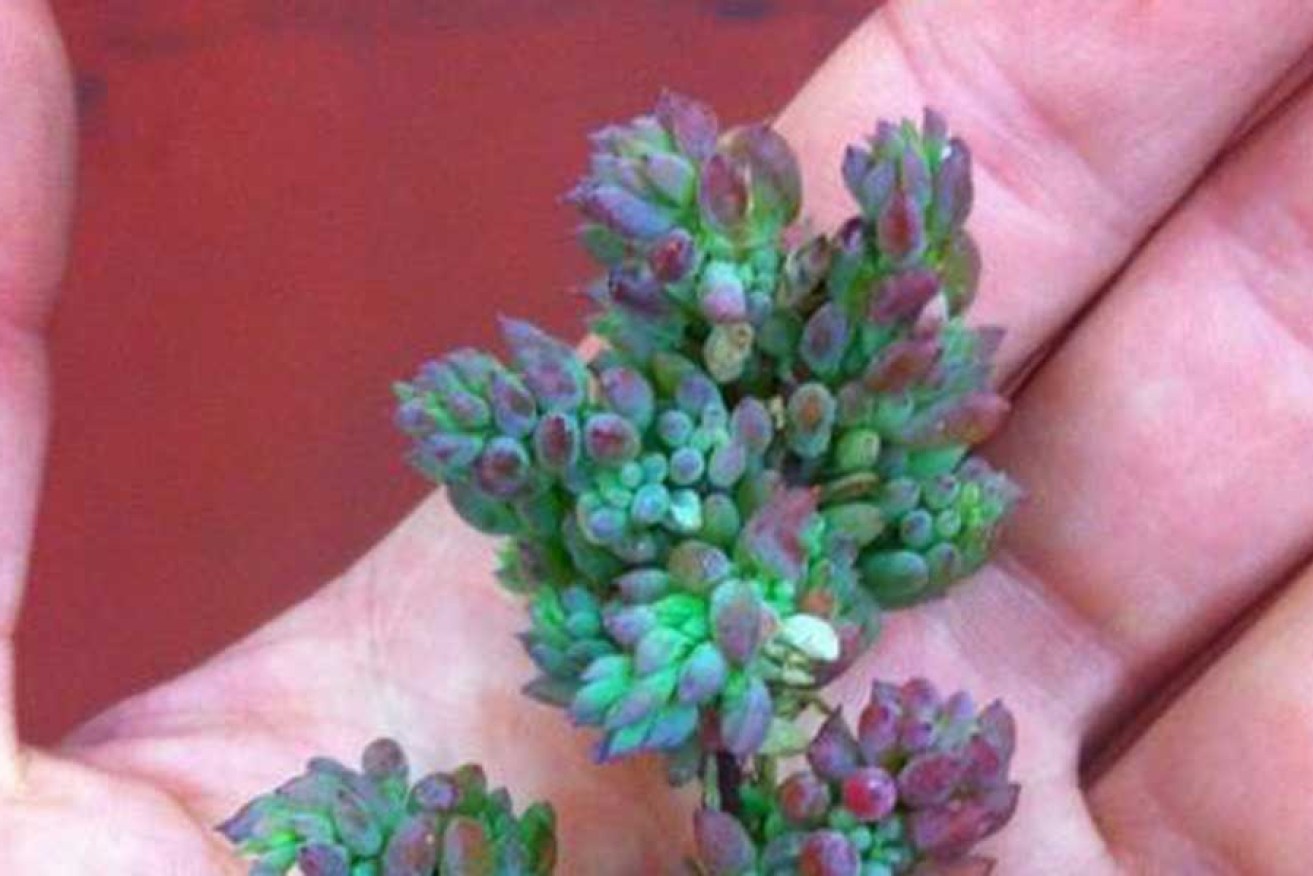Understanding Australia’s ‘raw materials’


The coastal succulent Sea Blight was a flavour revelation to Josh Evans.
The Nordic Food Lab, founded by arguably the world’s most influential chef Rene Redzepi, brings together biochemistry and gastronomy to explore local food.
In the Nordic setting, this means that products like foraged funghi, previously unappreciated plants and even insects are being understood as sustainable and, most importantly, delicious food products.
This idea of taking the raw products of the land and creating fascinating new flavours and dishes has put Redzepi’s Copenhagen restaurant, Noma, at the forefront of thinking about food. The Food Lab, a non-profit organisation, aims to support this sort of work with research and collaboration between chefs and scientists.
The Food Lab’s Josh Evans has been in Adelaide this month and participated in the “Terroir on the Table” dinner at the Adelaide Festival’s Lola’s Pergola, which is being overseen by innovative local chef Duncan Welgemoed.
Evans took some time to answer our questions – and his responses were fascinating.
What’s your take on what our “raw materials” are and what lessons we might learn from the Nordic experience in kindling interest in ignored local foods?
There are so many amazing organisms that only live in Australia – the diversity of Indigenous flavours is mind-boggling, really. They have also been used as food for tens of thousands of years. The flavours are there, the gastronomic knowledge is there – the main question now is how Australians, both Aboriginals and newcomers, relate to their edible landscape together.
What does it take to get people interested in eating things that they haven’t previously considered to be culinary options? And how do we make the leap between enjoying these foods as cooked by a skilled chef, to using them in home cooking (and does this matter)?
The answer to the first question is simple: make it taste good. How to go about this, of course, is much more complex.
The second question does matter, and its answer varies widely according to what specifically we’re talking about. The techniques to make seaweeds accessible to the home cook for whom algae are not culturally “edible”, for example, will be different than those for some of the sour or astringent wild Australian fruits and herbs. In general, the hardest step is the first taste. It seems to be a balance between celebrating the novelty of the untasted and situating it within a somewhat familiar context.
A useful strategy for incorporating new ingredients into both restaurant and home cooking is to think about their functionality in a dish: what is the acidic component here? Where is the fat coming from? How I do balance sweetness? These are the questions a good chef is always asking in their head and mouth. Using new ingredients in any context then becomes a combination of knowing they exist and what they taste like, and understanding and imagining their potential functions in the kitchen.
Despite our reputation, Australia is a very urbanised nation. We’ve lost our connection with agriculture and it doesn’t hit home for most people. Any ideas about how we can turn that around and make food production a more mainstream concern?
I’ve been talking about this with many people since coming to Australia. The Australian landscape can seem harsh, even inhospitable, to the newcomers of the last few centuries. Perhaps it still is seen this way. Perhaps these newcomers have never really had a connection to this landscape. It is about much more than the loss of a connection to agriculture. It is about cultivating the connection with one’s ecology, upon which we rely, whether or not we realise it. I would say the most effective way to cultivate this connection is to dismantle the oppression of Aboriginal sovereignty, and to instead focus on building a truly multicultural Australia.
On a more frivolous level, I’m interested in your favourite local eating experiences, favourite local produce, and impressions of the Lola’s Pergola experience?
Certainly not frivolous. I love being in the Adelaide Hills – they are both harsh and Edenic, have some delightful visionary producers and all sorts of delicious things growing. I was also lucky this time to get down to the beaches south of Adelaide, where we found some really fantastic beach succulents. The sea blight (Suaeda australis) was a revelation – juicy and salty, herbal, spicy, a bit sulfurous and even slightly sweet, it added a distinctive flavour to our first dish of smoked roe, clams, and charcoal.
Regarding Lola’s – I think it has high ambitions which are met and surpassed. The concentration of expertise and taste is astounding, and the feeling of commitment and joy among all who worked to bring it to life is palpable. It is a true community, which I was excited and honoured to be a part of.




